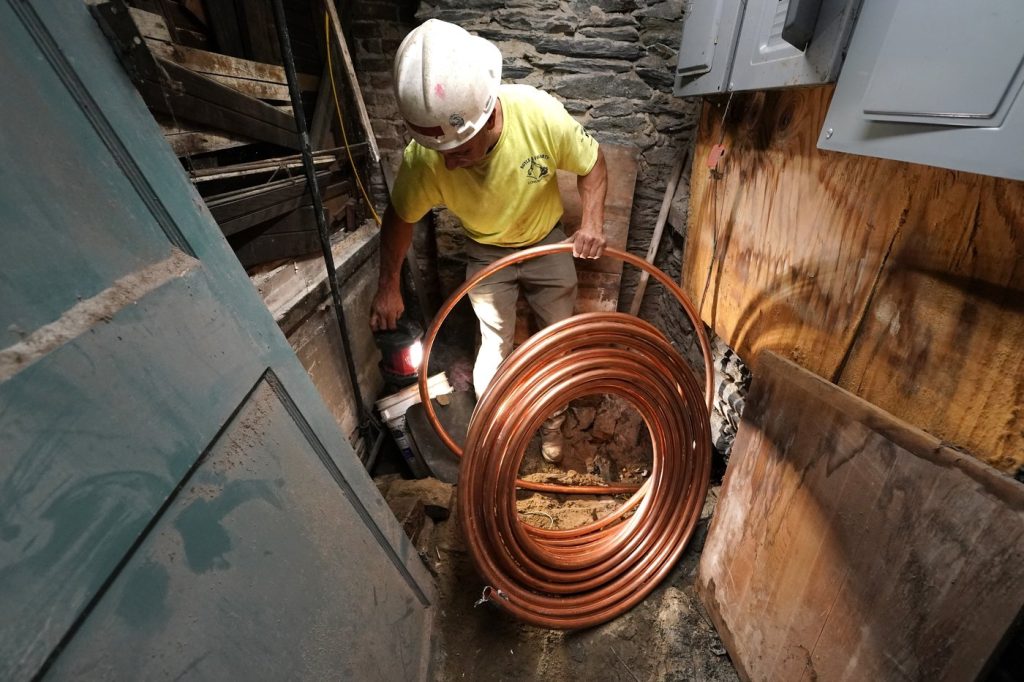A recent report card assessing the state of America's infrastructure has awarded it a grade of "C," reflecting a slight improvement from earlier evaluations. This change is largely attributed to significant investments made during the administration of former President Joe Biden. The report, produced by the American Society of Civil Engineers (ASCE), assessed various elements of infrastructure, including roads, dams, drinking water systems, and railroads.
The ASCE report emphasizes the necessity for sustained or increased federal funding to prevent further deterioration of infrastructure and escalating repair costs. Darren Olson, chair of this year’s report, highlighted the negative impact of aging infrastructure on daily life, pointing out issues such as poor road conditions damaging vehicles, flight delays, and power outages that spoil food. “By investing in our infrastructure, we’re making our economy more efficient, we’re making it stronger, and we’re making ourselves globally more competitive,” Olson stated.
In light of climate change, it is crucial that infrastructure systems can withstand severe weather events. Notably, last year, the U.S. experienced 27 weather-related disasters, each costing at least $1 billion, the second-highest total since 1980. The 2021 Infrastructure Investment and Jobs Act introduced $550 billion in new infrastructure investments, which is set to expire in 2026. An additional $30 billion was allocated through the 2022 Inflation Reduction Act, focusing on clean energy projects and addressing climate change.
While President Donald Trump’s administration saw some advancements in the condition of public parks, which improved from a D-plus to a C-minus due to ongoing investments, there have been cuts to staffing at the National Park Service. Despite the positive changes since 2021, the total needed to bring all of the nation’s infrastructure to good repair is estimated at $9.1 trillion. Even with current funding levels maintained, the ASCE anticipates a $3.7 trillion funding gap over the next decade.
Addressing drinking water infrastructure requires a monumental investment of $625 billion over the next 20 years. The grade for drinking water remains at C-minus, the same as it was four years ago. Communities grappling with outdated drinking water systems must also meet new federal requirements to replace lead service lines and reduce harmful per- and polyfluoroalkyl substances (PFAS).
The Infrastructure Investment and Jobs Act has enabled the initiation or completion of numerous critical projects. However, Scott Berry, director of policy and governmental affairs at the US Water Alliance, has expressed concerns that the investment gap has widened so significantly over recent decades that much more funding will be required. The bill also allocated billions to assist the U.S. Army Corps of Engineers in upgrading inland waterways, resulting in an improved grade for this category from a D-plus to a C-minus.
Transportation via barges on the Mississippi River plays a crucial role in the economy, moving approximately $150 billion in commerce each year. However, critical infrastructure, such as locks and dams—many of which were built over 50 years ago—requires regular maintenance often overlooked by the public. Mike Steenhoek, executive director of the Soy Transportation Coalition, noted that critical projects are usually funded in phases, leading to interruptions due to funding shortages, ultimately driving up costs for both materials and labor.
Clifford Winston, a microeconomist at the Brookings Institution, argues that the report's emphasis on engineering and spending overlooks the importance of implementing policies to improve infrastructure usage and financing. For instance, he pointed out that New York City's congestion pricing strategy places burdens on frequent users, encouraging less driving and potentially reducing the demand for new infrastructure.
Despite substantial financial investments, roads continue to receive a poor grade of D-plus, an improvement from D in the previous assessment. Rail and energy sectors have recorded lower grades, with rail dropping from B to B-minus due to high-profile incidents, such as a train derailment in East Palestine, Ohio, in 2023. The energy sector's grade fell from C-minus to D-plus owing to increased demand from data centers and electric vehicles. Engineers have noted that many problems across various infrastructure sectors have persisted for so long that a concerted effort is needed to address these issues to avoid further escalating repair costs.
On Wednesday, a group of engineers is expected to engage with lawmakers in Washington, advocating for the continuation of infrastructure funding and emphasizing the bipartisan nature of the issue. Olson expressed confidence that addressing infrastructure improvement is crucial for saving American families money and supporting economic growth, suggesting strong political support for ongoing investments in this area.










